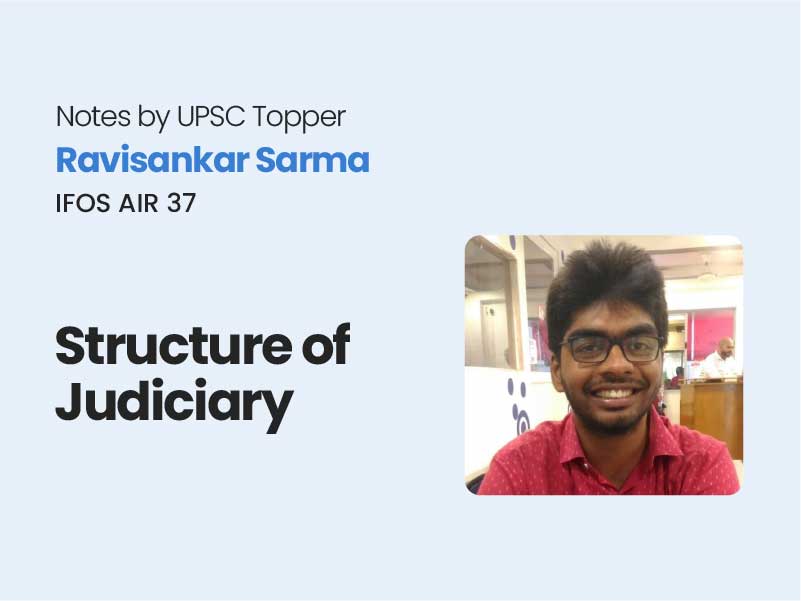Companion@360 → 7 Month programme to sharpen your writing skills → REGISTER NOW

Issues with PILs
Widely misused: PILs have been repeatedly filed for frivolous political, personal and business reasons that does not involve larger public interest. The SC has pointed out the misuse of PILs in the Judge Loya case commenting that it has a façade for publicity hungry people spawning an industry of vested interests in litigation
Public Interest subsuming minority interest/ Poor proxy: PILs that were conceptualised with the intent of delivery socio-economic justice to the poor has been used to bring about anti-poor outcomes in return for greater quality of urban life and environment. In these cases, a poor proxy files a PIL citing benefits to poor that are used to justify outcomes prejudicial or unrelated to them.
Eg: Large scale slum demolitions in Delhi were result of a PIL
Increasing Pendency of cases: The scarcity of judges and the accumulation of cases has crippled the judiciary rendering slow pace of verdicts. Misdirected PILs further add to the rising burden of courts where even frivolous cases waste the court’s valuable time and resources
Suggestions to Resolve Issues
- Ramp up legal aid: Increased funding and initiative from the bar can ensure the poor are adequately represented in courts without necessity of a proxy. This would ensure that their own interests are represented in court rather than a misguided collective interest whose outcome might be non-beneficial to the poor
- Strengthen Grievance redressal mechanisms: The aggrieved urban middle class in lieu of failure or non-responsiveness of existing government grievance redressal mechanisms knock on the courts doors. Improving their responsiveness will curb the gap filling role assumed by courts
- Instant Dismissal of Frivolous cases: Courts can instantly and expeditiously dismiss petitions unworthy of hearing in case it does not involve question of larger public interest. Courts may levy fines for filing such PILs.
- Exhibiting PIL ambition: Cases that are brought as PILs must be justified to accord procedural relaxation by linking instant facts of case to larger public interest or socio-economic welfare
Judiciary and Economic Consequences
- Pendencyà Stalled Projects: The cases of dispute stuck in litigation lock away working capital prolonging gestation periods particularly in the infrastructure sector. It contributes negatively to job creation and growth of the country
- Burden on Exchequer: As per the Economic Survey 2017, a huge proportion of government money is stuck in fruitless tax litigations that stall business and drain treasury
- Verdicts and Economic Consequence: Often the verdicts of judiciary are perverse to economic implications on developmental and job creation front.
- Poor Contract Enforcement: India’s poorest performance in the indicator of contract enforcement has been an outcome of the poor rate of resolution in cases involving contract disputes
- Job Creation: The multiplicity of labour laws and their inherent restrictions on the employer have restricted job creation capacity in Indian economy. Judgements with wider interpretations on the restriction have compounded the problem.
Conclusion
The judiciary should strive to retain a balance of public good and individual rights in it judgements having economic implications. It should aim to realise maximum public good and economic development in proportion to narrow infringements on individual rights.
Arbitration and Conciliation (Amendment Bill): Arbitration refers to the process of settlement between two disputed parties by a neutral third party i.e. the arbitrator without resorting to court. The main advantages of arbitration are confidentiality, speed and cheap
- Establishing ACI: The bill establishes the Arbitration Council of India with a view to promote arbitration, mediation and conciliation to enhance the ADRS in the country that can significantly fast track pendency issues
- Functions of ACI
- Grading of Arbitral Institutions
- Accreditation of Arbitrators
- Establishment, Operation and Maintenance of uniform professional standards for ADR matters
- Maintain a depository of arbitral awards made in India and abroad
- Composition of ACI: To have SC and HC Judges + Expert Arbitrator
- Role of Courts: SC (international commercial) and HC (domestic cases) designates arbitral institutions which parties can approach for appointment of arbitrators
- Relaxed Time Limit: The amendment proposes to do away with 12 months’ time limit for international commercial arbitrations
- Written Submission Time Limit of 6 months instituted as per the amended act
- Confidentiality of Arbitral proceeding and award except in cases where declaration of award is necessary for enforcement of the award
Judges and Recusals
Recently, there have been several cases where SC judges have recused themselves without stating any reason. The absence of same raises issues of transparency and judicial rectitude.
Principles of Recusal
In the SC Advocates on Record Association vs Union of India, Justice Chelameshwar stated a canon or maxim where a judge may recuse herself.
“ Where a judge has a pecuniary interest, no further inquiry is required to evaluate real danger or reasonable suspicion of bias is required to be undertaken”.
Thus, the real danger test is fundamental to the recusal requirements. However, the judgement does not go into what is a real danger test.
Way Forward
The judges of apex courts take an oath to impart justice without fear, favour, affection and ill will based on pillars of independence and impartiality. Recusals with clearly stated reasons are required to enable these pillars and impart their constitutionally vested duty to impart justice.
Read Also The National Pension System
